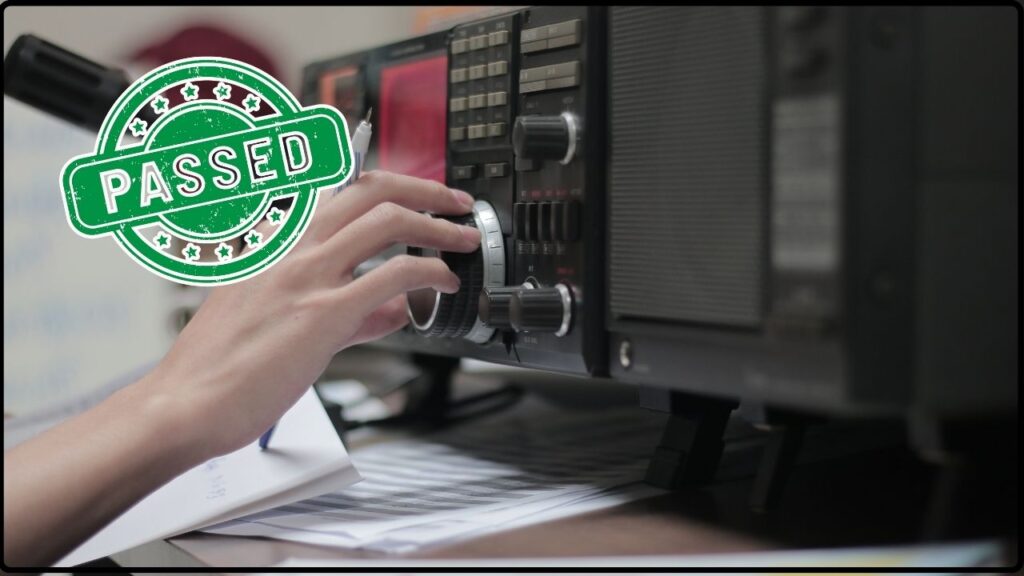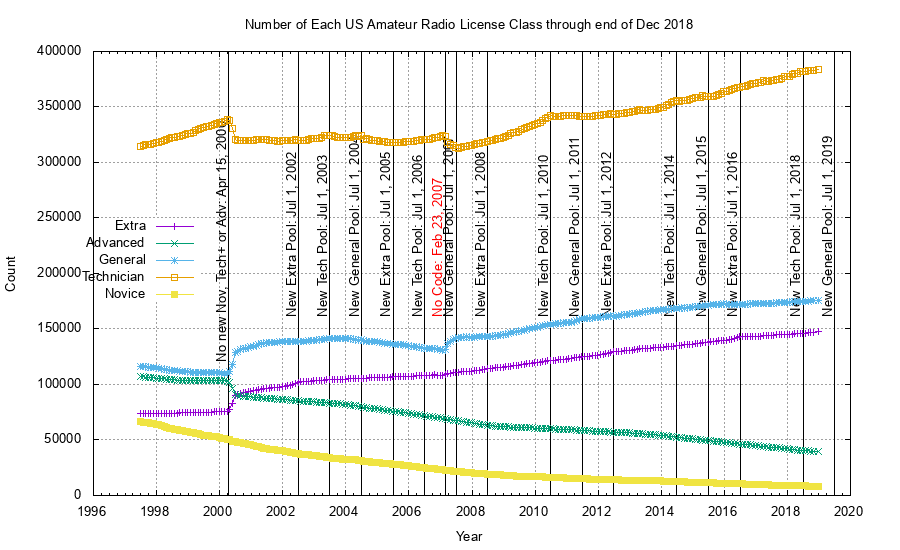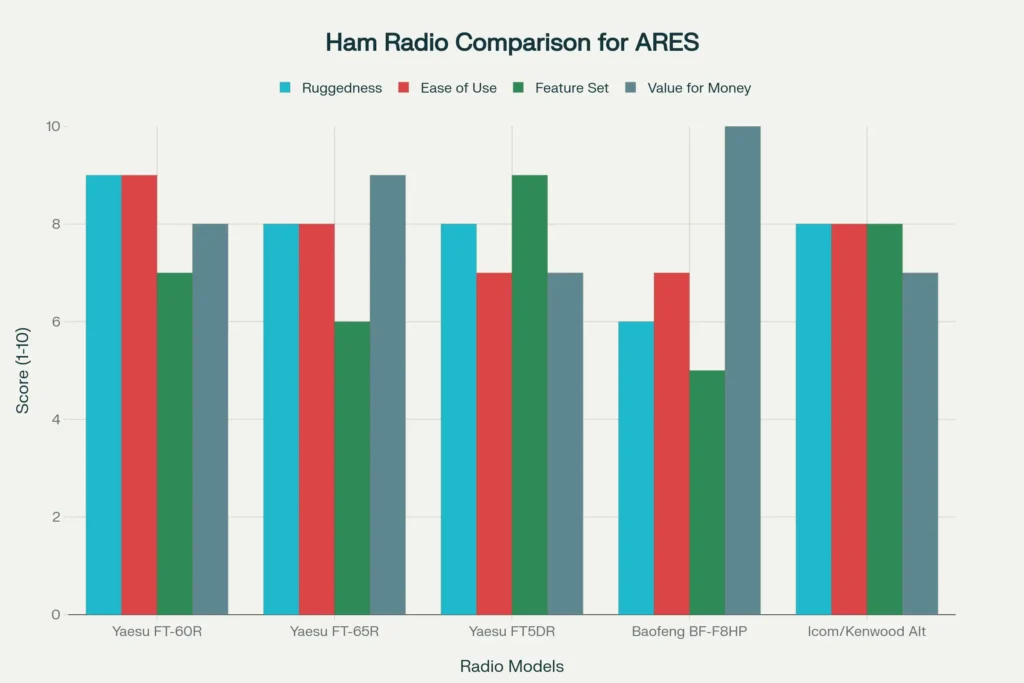
I Just Passed My Test! What’s Next?: So, you did it—passed your ham radio test! Big congrats—you’ve just unlocked a gateway to a vibrant technical community of explorers, innovators, and helpers who use the airwaves to connect across the globe. But now that you’ve got the license, what’s the best way to dive in and make the most of it? This comprehensive guide breaks down the top five essential steps to help you transition from a fresh license holder to a confident and skilled ham radio operator in 2025. Whether your goal is chatting with fellow hams, participating in emergency communication efforts, or dabbling in radio tech experiments, this article is written in a friendly, conversational style to get you started strong—and to keep you growing.
I Just Passed My Test! What’s Next?
Your ham radio journey starts here, with your license as your passport to a global network of passionate operators. Follow these steps: secure your license, pick your gear, make contacts, log your QSOs, and never stop learning. Ham radio blends innovation, community, and readiness in a way no current tech can replace. So tune up, plug in, and enjoy the endless possibilities on the airwaves.
| Category | Details |
|---|---|
| Total U.S. Licensed Hams | Over 740,000 active licensed operators (FCC, 2025) |
| Recommended Starter Radios | Baofeng UV-5R, Yaesu FT-4XR |
| Popular Communication Modes | FM voice, digital modes (FT8, DMR), satellite communication |
| Major Organizations | ARRL, local radio clubs, emergency networks |
| Core Benefits | Lifeline during emergencies, community engagement, STEM skills |
Why Ham Radio in 2025 Is More Relevant Than Ever?
Ham radio has been around for over 100 years, evolving hand-in-hand with communications technology, yet it hasn’t lost its spark. According to the FCC, as of 2025, there are over 740,000 licensed amateur radio operators in the US alone, spanning from hobbyists chatting over local repeaters to experts connecting satellites and even bouncing signals off the moon.
In an era dominated by smartphones and the internet, ham radio offers something special. It’s a direct, decentralized communication channel that works when conventional infrastructure goes down—making it invaluable during natural disasters and emergencies. Beyond emergency preparedness, it’s a fantastic learning platform for STEM enthusiasts, a way to build friendships worldwide, and a playground for tech tinkerers experimenting with antennas, radios, and digital modes.
I Just Passed My Test! What’s Next?: A Rich History That Shapes Today’s Ham Radio
Dating back to the late 19th century, the seeds of ham radio were planted by pioneers like Guglielmo Marconi, who pushed wireless communication boundaries. The 1920s ushered in the “Golden Age” of ham radio, with the first transatlantic contact in 1923 connecting amateurs in Connecticut and Scotland, proving the power of long-distance communication.
In the decades that followed, hams contributed to technological advancements in radio modulation, digital communications, and global standards. For example, during WWII, ham operators supported military communications worldwide. The 1970s saw the rise of repeaters that vastly expanded local coverage, and the digital revolution of the 1990s introduced new data modes like PSK31 and FT8, revolutionizing how hams communicate.
Today, ham radio is embracing innovations like software-defined radios (SDR), AI-enhanced signal processing, and satellite links, keeping the hobby as exciting and relevant as ever.
Step 1: Secure Your License & Unique Call Sign
Passing your exam is a huge milestone, but your journey begins when the FCC issues your official license and call sign—the unique identifier you’ll use during radio communications. This call sign personalizes your presence on the airwaves and is required by regulation to identify yourself periodically during QSOs (radio contacts).
When submitting your license application, think about your privacy. Your address will show up in the FCC’s public database, so many hams opt to use a PO box or mail-forwarding service—a simple step to keep home info private without complicating the process.
Once licensed, you gain access to specific frequency bands and operating privileges depending on your exam level (Technician, General, Extra). Understanding your license class early helps you set goals for future upgrades.

Step 2: Pick the Right Equipment and Keep It Shipshape
Starting with a handheld radio (HT) is usually the smartest move. Models like the Baofeng UV-5R offer great value for novices. These radios cover VHF/UHF bands, allowing easy local contacts through repeaters and simplex frequencies. If you want clarity and durability, radios from Yaesu or Icom are excellent mid-range alternatives, praised for reliability and features.
Essential Setup Tips:
- Programming repeaters: Use tools like Chirp software to program multiple repeaters into your radio efficiently.
- Antenna importance: Even a simple telescoping antenna on HTs makes a huge difference; later, upgrading to external antennas can boost performance.
- Power management: Use rechargeable batteries, keep spares handy, and follow manufacturer guidance on charging to extend equipment life.
Maintaining Your Equipment:
- Clean connections and antenna bases regularly to prevent corrosion.
- Store your gear in dry environments to avoid moisture buildup.
- Upgrade firmware/software when manufacturers release updates.
Proper maintenance prolongs equipment life, ensures reliable transmissions, and improves your overall ham experience.
Step 3: Make Your First Contact & Plug Into the Community
Making your first contact is often described as “magic.” Don’t hesitate to start by calling on simplex frequencies, where your handheld directly communicates with another without a repeater. Use your call sign clearly and listen carefully for any responses.
Next step: join local nets—scheduled on-air meetings where operators gather to chat, exchange info, and keep the community active. These nets are beginner-friendly and often hosted by local clubs or emergency organizations.
Following basic on-air etiquette is crucial:
- Identify yourself with your call sign every 10 minutes and at the end of your transmission.
- Stick to net rules and politeness.
- Be patient and listen more than you talk, especially at first.
Joining a local amateur radio club adds tremendous value. These groups offer mentorship, learning sessions, loaner equipment, and social events, boosting your skills and enjoyment.
Some great online communities include:
- Reddit: r/HamRadio
- QRZ Forums
- ARRL Local Clubs Directory
Step 4: Log Your Contacts & Track Your Progress
Logging contacts is both practical and rewarding. Whether on paper or digital apps, keeping records helps you refine your skills, validate your communications, and can qualify you for awards like the DX Century Club or Worked All States.
Logging Made Easy:
- Free tools like QRZ.com provide online logging and call sign lookup.
- Software solutions like Ham Radio Deluxe or Log4OM offer advanced features, including contest integration.
- Mobile apps also allow contact logging on the go, perfect for portable operations.
Logging enables you to participate in contests, special event stations, and emergency communications that often require documented contacts.
Step 5: Keep Learning, Upgrade, and Innovate
Ham radio is a lifelong adventure. With ambitions to advance your license class (General, Extra), you unlock new frequency bands and capabilities. Many hams enjoy experimenting with digital modes such as DMR, System Fusion, or FT8, which boost signal reliability and enable long-distance low-power communication.
Expanding Your Setup:
- Building or investing in better antennas increases range and signal quality.
- Base stations equipped with advanced rigs open opportunities to explore HF bands and DXing (long-distance communication).
- Dive into emerging tech like software-defined radios (SDR) and satellite communication.
Continuous Learning:
Stay connected with ham radio news, equipment reviews, and tutorials from sites like ARRL, ham radio podcasts, and YouTube channels like K4FMH or HamRadioConcepts.

Legendary Hams & Inspiring Stories
Ham radio’s history is full of influential operators whose contributions transcend hobbyist status:
- Hiram Percy Maxim, founder of ARRL, was instrumental in organizing amateurs worldwide.
- Nobel laureate Joe Taylor, K1JT, developed digital modes like FT8, revolutionizing global communications.
- During the Falklands War, hams relayed crucial intelligence despite communication blackouts.
- Throughout natural disasters—from hurricanes to wildfires—ham operators have provided vital emergency communication links when all else fails.
These stories remind us ham radio is about community service, innovation, and pushing technology’s limits while connecting people.
Emerging Trends in 2025
- Digital Voices & Modes: Clearer, easier communication via DMR, C4FM, and FT8.
- AI Integration: Smart radios that auto-tune and decode signals, easing operation.
- More mesh networks and satellite internet integration for resilient, off-grid communication.
- Growth in portable and emergency-ready ham setups for field operations and disaster relief.
Ham Radio Repeaters Explained: How They Work and How to Use Them
What Was Packet Radio? The Original “Digital Mode” for Hams
How to Get Your Ham Radio License in 3 Simple Steps (The 2025 Guide)










